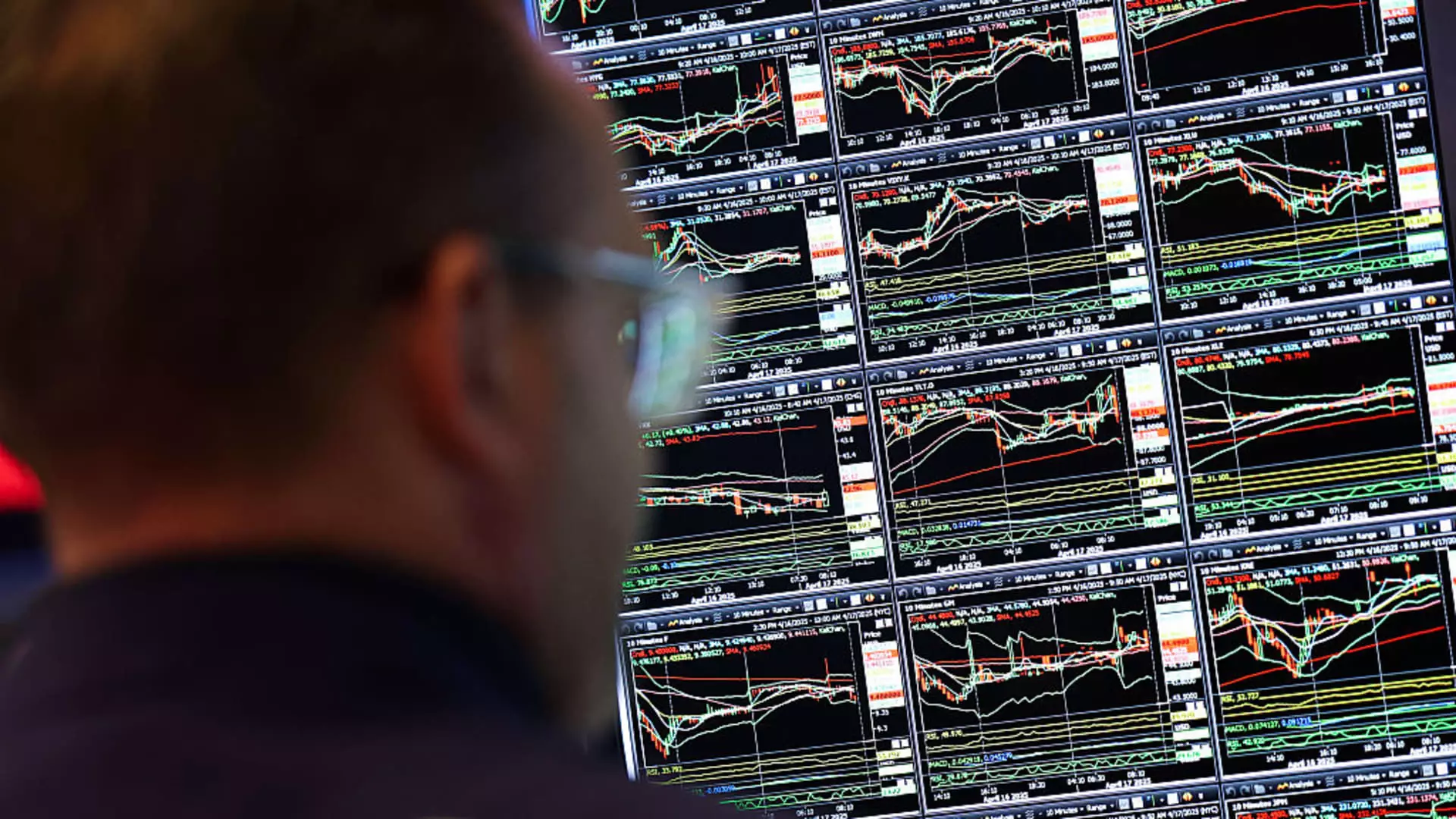In today’s rapidly changing global economic landscape, the Chinese tech market stands at a critical juncture, embodying both hope and trepidation. Analysts, such as those at Bernstein, are drawing parallels between current market conditions and the tumultuous period of the COVID-19 pandemic. While the inherent uncertainty fuelled by geopolitical tensions and trade wars remains, it seems that a stretched sentiment on the stock is offering a potential buying opportunity for those willing to look beyond the immediate chaos.
The Bernstein team asserts that we are witnessing a “fade sentiment extremes” scenario. This suggests that the emotional rollercoaster many investors are experiencing may lead them to overlook the fundamental strengths of select stocks in the Chinese tech sector. With valuations plummeting to levels reminiscent of the 2021-2023 period, discerning investors might find themselves in the right position to capitalize on the undervalued opportunities that arise.
Government Policy: A Double-Edged Sword
Another critical element influencing investor sentiment is the Chinese government’s approach to regulation and market support. Historically, stringent controls led to market drops, such as the 2022 Shanghai lockdown, which strained investor optimism significantly. Yet, recent efforts from Beijing indicate a noticeable pivot towards nurturing domestic growth and technology.
The government’s backing cannot be understated as it plays a crucial role in stabilizing sectors like digital advertising and video gaming. As Bernstein points out, these areas remain insulated from international trade scars and could see invigorated growth. For instance, this regulatory shift aligns with the new emergence of products like DeepSeek’s artificial intelligence, demonstrating that innovation can thrive even in challenging circumstances.
Thus, while one must always tread cautiously with investments in markets colored by political dynamics, the right policy signals may create a fertile ground for growth, eventually amplifying investor confidence.
Market Dynamics: Rising from the Ashes
Investors often gravitate toward stocks with robust fundamentals that can weather stormy geopolitical seas. The steep price-to-earnings ratios observed in companies like Tencent exemplify this. The technology giant presents an appealing investment proposition due to its low trading multiple—mimicking a strategic investment strategy aligning with principles often seen in resilient markets.
Bernstein analysts emphasize the promising potential for Tencent, who thrives in digital advertising, a sector that has shown at least 10% growth year-over-year. As trade restrictions dampen the prospects for exports, domestic competition will likely rise, driving demand for effective advertising strategies. This scenario paints an optimistic picture for those who invest in players like Tencent, which is well-positioned to adapt to shifts in consumer behavior within the Chinese market.
Nevertheless, a closer look reveals a contrasting narrative. As the U.S.-China trade tensions escalate, cracks may begin to form in this otherwise supportive environment. Investors must remain alert to develop a nuanced understanding of the correlation between domestic performance and global dynamics, for even the most resilient firms may encounter unanticipated challenges.
Quantitative Easing and Economic Forecasts
In a development that could embolden investor interest, recent GDP growth figures from China have surpassed expectations, registering a 5.4% increase in the first quarter of the year. Despite some economists trimming their growth projections, the prevailing sentiment in the market seems to reflect a cautious optimism about economic performance.
The Bernstein report suggests that, while top-down slowdowns may threaten to distort the investment horizon, they do not indicate an imminent economic apogee. Indeed, with local service giants like Meituan signaling robust forward guidance, investors can glean significant opportunities within the marketplace.
This understanding becomes particularly salient when considering the Chinese tech landscape’s resilience in the face of adversity. If managed correctly, the government’s investment in technological advancement coupled with progressively easing regulatory restraints can unlock tremendous potential, reinforcing the optimistic outlook espoused by Bernstein.
Delisting Risks: A Sword of Damocles
Yet, the looming threat of forced delistings for Chinese firms listed in the U.S. represents a source of concern that cannot be ignored. The response from the U.S. Treasury indicates a level of uncertainty that leaves investors questioning their positions in American V.S. Hong Kong-listed stocks. The recent priority given by Chinese companies to establish a foothold in the Hong Kong market underscores the strategic pivot needed to circumvent the damning effects of increased scrutiny stateside.
Investors are showcasing a marked preference for Hong Kong-listed companies, indicating a vote of confidence within the local market despite the political gymnastics observed in Washington. Yet, this shift also raises the question of whether firms such as PDD are adequately equipped to navigate such treacherous waters successfully.
Although these dynamics create an air of uncertainty, they also spotlight the resilience of the Chinese tech sector. With firms and investors demonstrating an agile approach to a volatile international climate, there may yet be a silver lining for stakeholders prepared to maneuver within this complex ecosystem.

